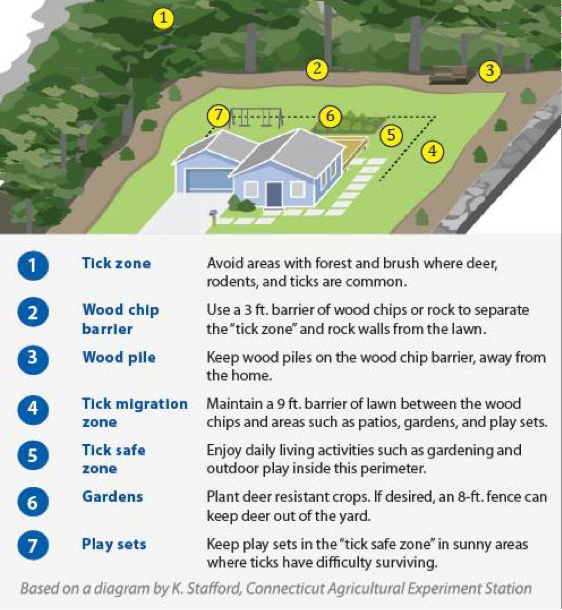Read Part One
Prophylaxis for Tick Bite
Even though the Infectious Diseases Society of America does not officially recommend this, the CDC suggests that a single dose of the antibiotic doxycycline can be offered to adults and children greater than eight years old when an I. scapularis tick can be identified, and it has been attached for more than 36 hours. Prophylaxis must be started within 72 hours of the tick being removed. This is especially useful in areas in the U.S. that are highly endemic, such as Connecticut, Delaware, Massachusetts, Maryland, Maine, Minnesota, New Hampshire, New Jersey, New York, Pennsylvania, Rhode Island, Virginia, Vermont, and Wisconsin.
Tick Removal
Quick removal of the tick is prudent. There are many myths surrounding how best to remove a tick, including using a just-put-out match to make the tick back out or the use of Vaseline, oil, kerosene, or fingernail polish to suffocate the tick. These methods increase the likelihood of the tick regurgitating into the host, thereby increasing the likelihood of contracting a disease. The proper way to remove a tick is to grasp between the skin and the tick with tweezers and apply slow and steady pressure straight back. If all of the tick does not come out clean, try to remove the remaining parts with a pair of clean tweezers. If that is not possible, leave the remaining parts in the skin and clean with soap and water. After tick removal, clean the affected area with soap and water.
%20(1).png)
Image source: http://www.odh.ohio.gov/ticks
Is it necessary to send in
removed ticks for testing?
You may see advertisements to get your tick tested. It is most important to find a tick and remove it promptly. Sending the tick for identification is not useful for diagnosis of Lyme disease. According to the CDC, there are several reasons for this: 1. An infected tick does not mean that you have been infected. 2. The results may take too long to return if you do have an infection. 3. You may still have Lyme disease even if the tick comes up negative – for example if a different tick bit you
Controlling Tick Populations At Home
Controlling the host animal populations close to home can limit the number of ticks encountered as you step outside your door. According to the Tick Management Handbook, one of the best ways to limit our exposure to ticks and their diseases is by keeping your yard maintained to limit underbrush and leaf piles, and creating a border of wood chips or gravel between the woods and your lawn. Ticks are abundant in organic debris and damp, shaded areas at the edge of your lawn, and are prone to desiccation in areas that promote drying and increase exposure to sun, such as wood chips and gravel. The CDC recommends making a “tick safe zone” around your property.

Image source: https://www.cdc.gov/lyme/prev/in_the_yard.html
Other Tick Population Control Measures
o Host Animal Control – control the population of white-footed mouse,
chipmunks, and larger animals, especially deer, to reduce the influx of ticks.
o Bait boxes – these attract mice and small rodents like chipmunks into a box with bait where they are then coated in Fipronil, the active ingredient in Frontline. They can be obtained by commercial pest control companies and are thought to be more effective than trying to just eliminate the mice population. Dolan et. al. (2017)
o Deer fencing/repellents - create a barrier to your property so the deer are less inclined to visit. This must be used in conjunction with rodent control as well. Deer are part of the adult life cycle and blood meal. A study on Monhegan Island in Maine found that when the deer population was eliminated so was the tick population
o Planting for tick prevention - Eisen and Dolan (2016) provide excellent advice for suppressing deer ticks, including through landscaping techniques. The Japanese barberry is a well-known tick attractant and is an invasive species, so should be avoided. Lavender, mint, catnip, sage, pennyroyal, and chrysanthemums along the border of your yard can keep ticks at bay. Avoid plants that deer are known to seek out, such as arborvitae.
o Pets - Keep pets tick free with the use of flea and tick repellents such as Frontline or Nexguard. Conduct at least daily tick checks and don’t allow pets on furniture/bedding.
.png)
Image source: (https://www.cdc.gov/dpdx/ticks/)